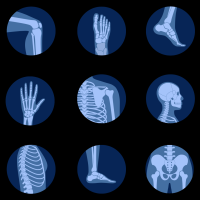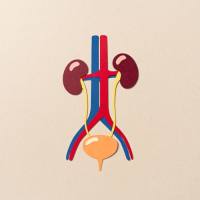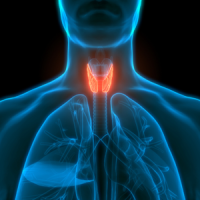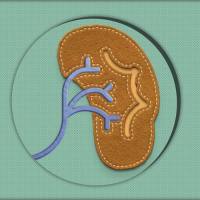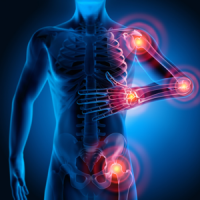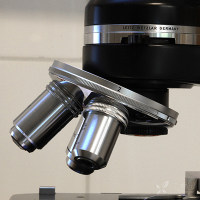【摘要翻译】脂质提高慢性肾脏疾病患者的α1肾上腺血管收缩敏感性
Lipids enhance alpha1-adrenoceptor pressor sensitivity in patients with chronic kidney disease.
全文链接: http://www2.us.elsevierhealth.com/scripts/om.dll/serve?retrieve=/pii/S0272638604008145&nav=full
Gadegbeku CA, Shrayyef MZ, LaPorte FB, Egan BM.
Department of Internal Medicine, University of Michigan, Ann Arbor, MI, USA. cgadegbe@umich.edu
BACKGROUND: Dyslipidemia in patients with chronic kidney disease (CKD) may contribute to hypertension (HT) by altering neurocirculatory control. To test this notion, we quantified the effects of acutely increasing levels of nonesterified fatty acids (NEFAs) and triglycerides on alpha1-adrenergic pressor sensitivity and baroreflex sensitivity (BRS) in subjects without diabetes with CKD. METHODS: Alpha1 pressor sensitivity was determined before and after increasing NEFA and triglyceride levels with a fat emulsion and heparin infusion in 8 subjects with stage 2 to 3 CKD (glomerular filtration rate, 56 +/- 6 mL/min by 125 I-iothalamate clearance). Seven subjects with HT and 8 normotensive control (CO) subjects with normal renal function and matched to patients with CKD also were studied. RESULTS: Fasting NEFA levels were greater in patients with CKD than in CO subjects (585 +/- 98 versus 321 +/- 32 micromol/L; P < 0.01), but not different from those in subjects with HT (501 +/- 68 micromol/L). Alpha1 pressor sensitivity, defined as the phenylephrine dose that increased mean blood pressure (BP) by 20 mm Hg, was greatest (lowest dose) in subjects with CKD (0.83 +/- 0.11 microg x kg(-1) x min(-1)), followed by those with HT (1.08 +/- 0.19 microg x kg(-1) x min(-1)) and CO subjects (1.34 +/- 0.19 microg x kg(-1) x min(-1); P < 0.05 versus CKD group). BRS, measured as the ratio of change in R-R interval to change in systolic BP during the phenylephrine infusion, was lowest, intermediate, and highest in the CKD, HT, and CO groups, respectively. Increasing NEFA and triglyceride levels significantly enhanced alpha1 pressor sensitivity in all 3 groups and reduced BRS in the CKD and CO groups. CONCLUSION: These observations suggest that the dyslipidemia prevalent in patients with stage 2 to 3 CKD may contribute to HT by enhancing alpha1 pressor sensitivity and impairing baroreflex function.
PMID: 15332217 [PubMed - in process]
脂质提高慢性肾脏疾病患者的α1肾上腺血管收缩敏感性
Gadegbeku CA, Shrayyef MZ, LaPorte FB, Egan BM.
背景知识:慢性肾脏疾病(CKD)患者异常脂质血症 可能通过改变神经循环系统的控制而促进高血压(HT)的发生。为了验证该设想,我们数字化了非DM的CKD患者急剧升高的NEFAs和TG对α1肾上腺血管收缩敏感性和压力感受器反射敏感性(BRS)。方法:测定8名2-3期CKD患者(GFR=56 +/- 6 mL/min,125I-碘他拉酸盐测定法)注射脂肪乳剂和肝素增加NEFA和TG水平前后α1肾上腺血管收缩敏感性。同时也研究了与CKD患者配对的7例HT患者和8例血压正常且肾功能正常的对照(CO)。结果:禁食CKD患者的NEFA水平比CO组高(585 +/- 98 versus 321 +/- 32 micromol/L; P < 0.01),但与HT组无差别(501 +/- 68 micromol/L)。α1肾上腺血管收缩敏感性[定义为使平均动脉压力(BP)升高20mmHg的苯肾上腺素剂量]在CKD患者中是最高的[剂量最低0.83 +/- 0.11 microg x kg(-1) x min(-1)],HT组次之,CO组最低。BRS(通过测定苯肾上腺素注射后R-R间期变化/收缩压变化)在CKD,HT和CO组依次升高。NEFA和TG水平升高在所有的3组中都明显增高α1肾上腺血管收缩敏感性并降低CKD和CO组BRS水平。结论:这些观察表明在2-3期CKD患者中流行的异常脂质血症可能通过增高α1肾上腺血管收缩敏感性和损伤压力感受器反射功能而促进HT发生。
PMID: 15332217
请高手指教.






